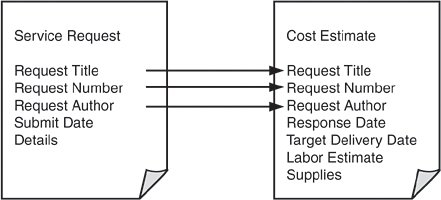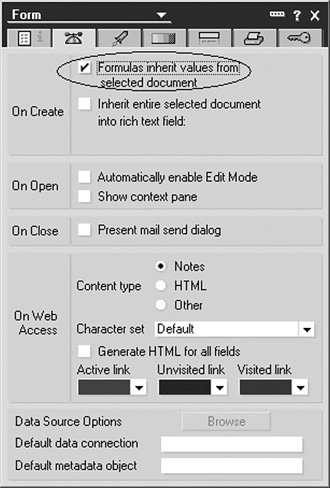How to Inherit Fields Between Forms
Using the "Inherit" feature, field values in one document automatically transfer to and populate fields on another document. This feature is typically implemented in conjunction with custom dialog windows and "response" and "response to response" documents.
For example, lets say that you are building a database to manage service requests. The database includes two formsone to track the customers request and another to track the cost estimate. When building the database, you would like three fields from the "request" to automatically populate the related fields on the "estimate". The three fields are
- RequestTitle
- RequestNumber
- RequestAuthor
Using the Inherit property, these fields transfer to the new form when created. This saves the user some time by avoiding the need to manually create the new "estimate," and it ensures that related information is accurate.
How It Works
This feature works by transferring data between two fields (see Figure 17.6). Both forms must have the exact same fields, and the Inherit property must be set on the secondary form (i.e., the "estimate" document). In many cases, youll want to set the fields on the secondary form to be computed to prevent users from changing the values.
Figure 17.6. Field inheritance between forms

After the forms have been designed, a button to generate the secondary form should be added to the primary form. For example, a button called Create Estimate would reside on the service request form. When the user clicks this button, a new "estimate" document would be created (using the compose command), and field values would be transferred to the new document.
Implementation
To implement this technique, complete the following steps.

